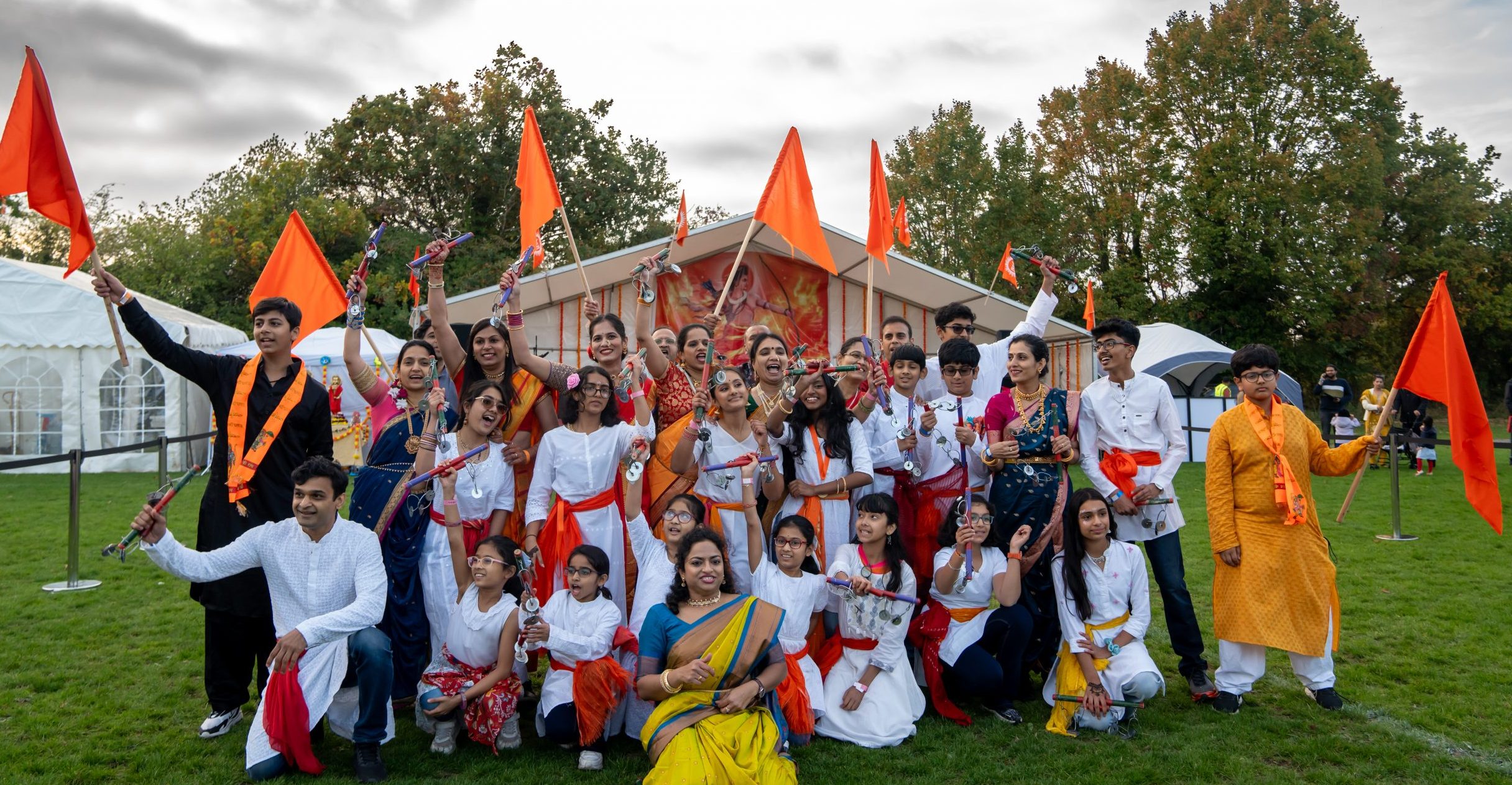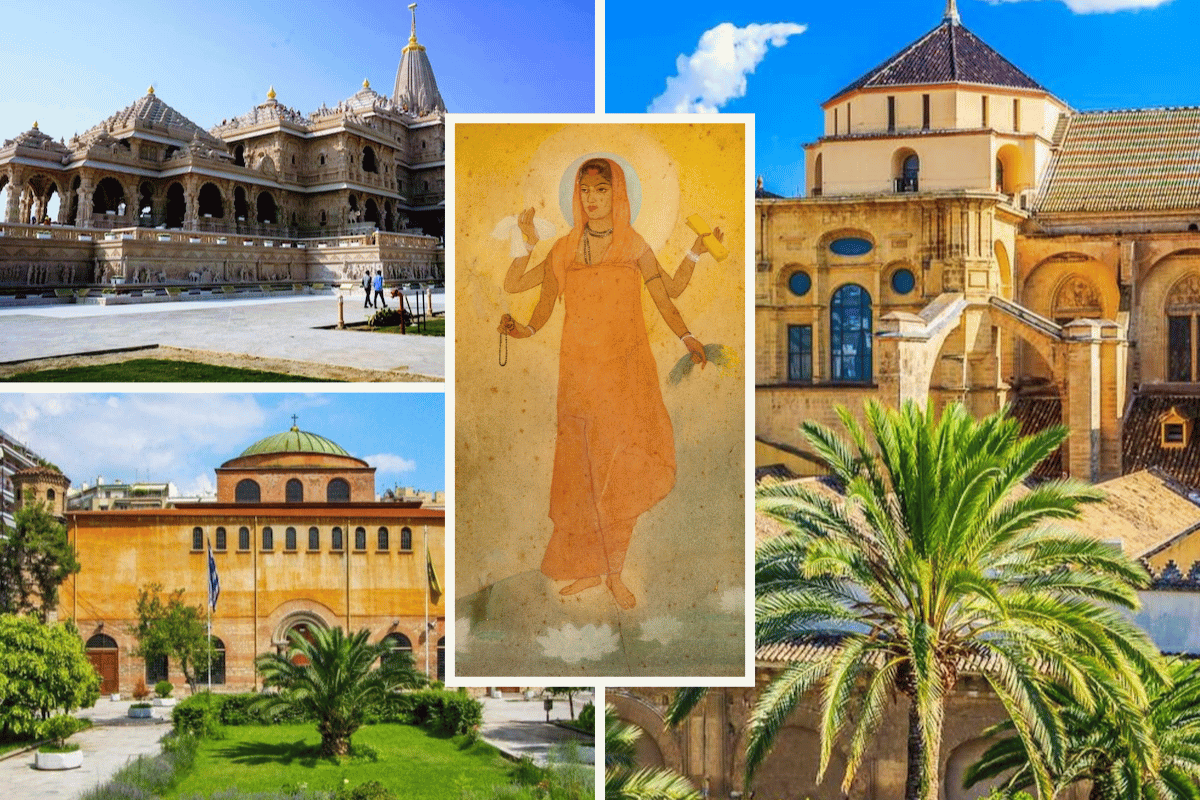
Makar Sankranti is one of the rare Hindu festivals based on the solar calendar. Makar Sankranti is the celebration of the sun’s journey from the Southern to the Northern Hemisphere and is an auspicious time.

Makar translates as ‘Capricorn’ and Sankranti means ‘transition’. This occasion marks the transition of the sun from the zodiac of Sagittarius (dhanu) to Capricorn (makara). The astrological configuration on Makar Sankranti is called ‘Maha-snana-yoga.’ Since the sun has made this transition which vaguely coincides with moving from south to north, the festival is dedicated to the solar deity, Surya, and is observed to mark a new beginning. Many native multi-day festivals are organised on this occasion all over Bhārat (India).
In the Vedas, Sankranti deciphers the movement of the Sun from one Rashi (constellation of the zodiac) to the next. Hence, there are 12 Sankrantis in a year. Out of these, it’s also dubbed ‘Poush Sankranti,’ is considered the most auspicious, and it is one of the few Hindu festivals that align with the solar cycle. The festival also marks the beginning of the harvest season when new crops are worshipped and shared. According to ancient scholars, the celebration of this auspicious day started around 300 AD in the Gangetic plains of India.
Historical figures
In the Mahabharat (3102 BC) era, people used to consider Makar Sankranti as an auspicious day. A plot from Mahabharat explains that the great warrior Pitamah Bhishma fell to the arrows of his grandson Arjuna on the battlefield of Kurukshetra. After lying on the bed of arrows for almost a month, he chose the day of Makar Sankranti to leave his mortal body, so that he could attain Moksh (salvation).
The birth of Swami Vivekananda on Sankramana day is an inspiring indication of the passing of the long night of self-oblivion and the birth of an effulgent era of resurgent Hinduism. Hindus look upon themselves as children of Mother Nature and strive to sip her milk of bounty in all fields, and seek to unfold all the qualities of their body, the head and the heart.
Significance
Makar Sankranti is a popular pan-Indian solar festival. This festival is dedicated to Surya dev (the sun). This significance of Surya is traceable to the Vedic texts, particularly the Gayatri Mantra, a sacred hymn of Hinduism found in its scripture named the Rigveda. Sankranti, signifying light, also gives the message of intellectual illumination. On the social plane, it carries a vital significance of national welfare. It is the warmth of love and fellow feeling among the people of a country that ultimately makes them stand up in unison in adversity or prosperity.
Makara Sankranti is regarded as important for spiritual practices and accordingly, people take a holy dip in rivers, especially Ganga, Yamuna, Godavari, Krishna and Kaveri. Taking a holy bath in the confluence of Prayag — Ganga, Yamuna and Saraswati is considered auspicious. The bathing is believed to result in merit or absolution of past sins. Every 12 years, Hindus observe Makar Sankranti with the world’s largest mass pilgrimage known as the Kumbh Mela, with an estimated 100 million people attending the sacred festival. They also pray to the Sun and give thanks for their successes and prosperity. Makar Sankranti is also a harvest festival. It is a time of celebration and expressing thanks to Mother Earth or nature when winter starts to recede.

Kumbh Mela
Spiritual Significance
Many aspects of the yogic system were evolved and developed based on the connection between the celestial system and the human system, to make use of the changes in position that happen incrementally, from moment to moment, minute to minute, hour to hour, day to day. This time is most important for yogis to make a new, fresh effort in their spiritual practice. Accordingly, people who have family also make a fresh attempt in whatever they do in their lives.
This is beautifully manifested in the planetary system in which we live. The diameter of the Sun is 108 times the diameter of the Earth. The distance between the Sun and Earth is 108 times the diameter of the Sun. The distance between the Moon and Earth is 108 times the diameter of the Moon. And there are 108 padas (steps) in one lunar year. Planet Earth takes 13 ½ lunar revolutions or one solar year to complete its orbit around the Sun. In this orbit, it arranges itself in 27 nakshatras or 108 padas, almost like the beads of a mala. Makar Sankranti marks the completion of and the beginning of a new cycle.

Morning arghya to the Sun
Rituals, Traditions and Customs
In the ancient scriptures, it is suggested that one should wake up just before sunrise and take a bath on the day of Makar Sankranti, for a positive and auspicious start to the day. It is also recommended to mix a small amount of Til or sesame seeds into your bathing water. After bathing, one must offer prayers to the Sun by chanting the Gayatri Mantra and doing Argya — offering water to the Sun. Married women offer clay pots filled with newly harvested food grains to the temple deity. Many melas or fairs are held on Makar Sankranti the most famous being the Kumbha Mela, Poush Mela, Mela Maghi, Gangasagar Mela.

Rangoli of Cow and clay pot filled with milk and grains
People clean their houses, decorate the entrance with mango leaves and rangolis (decorative designs made with rice flour), and wear new clothes. Women decorate the entrance of their homes with geometric patterns drawn using coloured rice flour called muggu. Women in some communities gift household articles such as food or makeup to other married women. Married women exchange haldi-kumkum (turmeric powder and vermillion), applying it on each other’s foreheads. Families and friends gather on terraces and roofs and fly kites together. Colourful kites of different shapes, sizes, and colours made of leaves and paper speck the sky. Kite flying signifies exposure to the sun which is good for the human body and is a source of Vitamin-D. Elaborate rangoli or muggu or decorative designs are drawn in front of houses with chalk or flour. These are further decorated with flowers and cow dung (particularly in villages). People also decorate cows and bulls colourfully with beautiful costumes. One popular practice among farmers is to bathe their cattle, polish their horns and hooves, handsomely decorate them with colourful paints, garlands and bells and lead them in a procession.

Decorated Cow
Food
Makar Sankranti is a time to consume freshly harvested food grains, which are first offered to the deities and then eaten. Ayurveda suggests eating Khichdi since it is a light and easily digestible dish. The connotation of eating Khichdi is that it prompts the body to prepare for the change in season, from the cold Winter breeze to the forthcoming warmth of Spring. Apart from its benefits for health, cooking and eating Khichdi on this festival is symbolic of unity, as the dish is cooked in a single pot by uniting all the ingredients, including freshly harvested rice, lentils, seasonal vegetables, and spices. It signifies the process of life and regeneration, indicating the beginning of the new harvest year.

Til Gur (Sesame Jaggery)
Ayurveda also suggests taking Sesame Seeds and Jaggery on this divine day. Sankranti and Til (Sesame) are synonymous as the festival is also commonly known as ’Til Sankranti.’ Sesame seeds can absorb negativity and improve the ‘Sattva’ — purity, goodness, and harmony, which in turn facilitates spiritual practice. Pongal, a dish of rice mixed with boiled milk and sugar is a treat prepared by all during this festival. Other festive dishes include lemon and tamarind rice, vadas, vegetable gravies and Payasa (a sweet rice pudding).
Makar or Makara Sankranti is celebrated in many parts of the Indian Subcontinent with some regional variations. It is known by different names and celebrated with different customs in different Indian states and South Asian countries:
- Sankranti, Makara Sankranti, Makara Sankramanam, Pedda Panduga: Andhra Pradesh
- Pusna: West Bengal, Assam, Meghalaya
- Suggi Habba, Makara Sankramana, Makara Sankranti: Karnataka
- Makar Sankranti, Uttarayana or Ghughuti: Uttarakhand
- Makar Sankranti or Makara Mela and Makara Chaula: Odisha
- Makar Sankranti or Sankaranti or Shankaranti: Kerala
- Makar Sankranti or Dahi Chura or Til Sankranti: Mithila Bihar
- Makar Sankranti, Maghi Sankranti, Haldi Kumkum or Sankranti: Maharashtra, Jammu, Goa, Nepal
- Hangrai: Tripura
- Pongal or Uzhavar Thirunal: Tamil Nadu, Sri Lanka, Singapore, Malaysia
- Uttarayana: Gujarat
- Maghi: Haryana, Himachal Pradesh, Punjab
- Magh Bihu or Bhogali Bihu: Assam
- Shishur Saenkraat: Kashmir Valley
- Sakraat or Khichdi: Uttar Pradesh and western Bihar
- Poush Sangkranti: West Bengal, Bangladesh
- Tila Sakrait: Mithila
- Tirmoori: Pakistan

Flying Kites
‘To be grateful for the land on which our food grows and to unite and rejoice’ is the essence of Sankranti. This festival brings forth generosity, harmony, gratitude and love among people.









